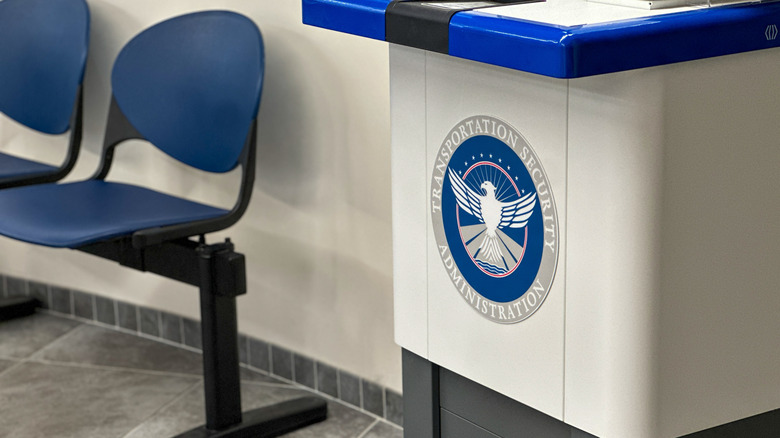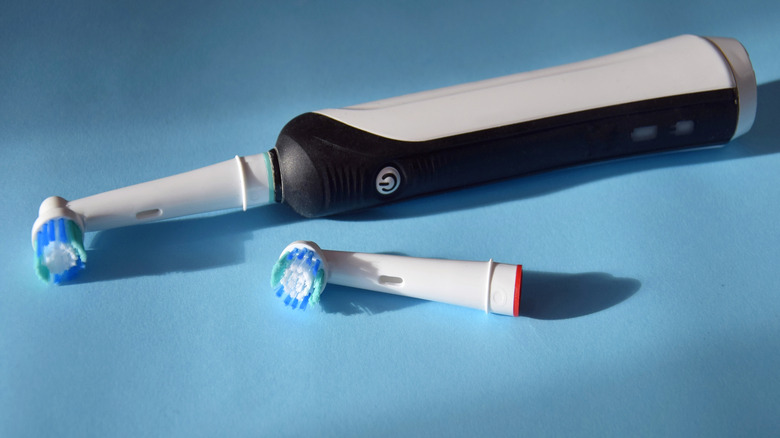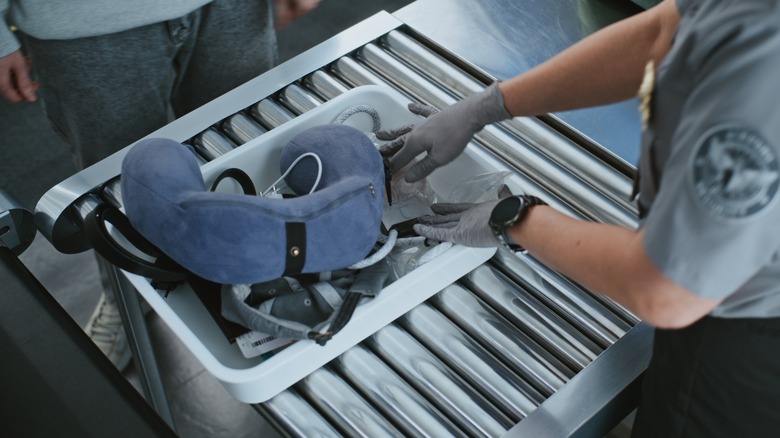You May Want To Avoid Bringing Your Electric Toothbrush Through TSA (Here's Why)
Travelers planning to fly with an electric toothbrush in their carry-on luggage might want to double-check their device before heading to the airport. The Transportation Security Administration (TSA) and the Federal Aviation Administration (FAA) have put out a reminder to passengers that devices containing lithium batteries, including many electric toothbrushes, probably need to stay out of their checked bags. That said, they still might be a problem in their carry-on, too.
The reasoning comes down to the inherent and well-documented fire risk of lithium-ion and lithium-metal batteries. Devices with one of these batteries inside can suddenly overheat and ignite thanks to thermal runaway, a chemical reaction that becomes especially dangerous in the pressurized cabin of an airplane. While these incidents are rare, they continue to pose a threat to planes. And if your toothbrush of choice ever gets flagged by the Consumer Product Safety Commission, not even your carry-on would be safe. It'd have to be left behind.
The risk that electric toothbrushes carry
Toothbrushes might not seem like obvious hazards, but they should be treated with the same kind of caution as laptops or smartphones when boarding an airplane. That means stowing it in the overhead bin or under a seat so flight crews can quickly recognize signs of overheating (smoke, for one, as well as extreme heat or swelling) and respond accordingly when a device's battery erupts.
If the lithium-ion-powered device happened to overheat — or worse — while in your checked bag, there would be no way to know while in the air. This is a much greater threat than it would be in your carry-on, where at least the flight crew can keep an eye on things.
Power banks and laptops have been the most common to catch fire in recent years, but anything with a lithium power source carries at least some risk. While passengers are technically still allowed to put battery-powered toothbrushes in their checked luggage, they have to be completely powered off and packed away to prevent unintentional activation or damage. It may be better to just keep it accessible in your carry-on.
What about other battery-powered devices?
FAA regulations extend well beyond toothbrushes, outlining strict requirements for devices powered by lithium batteries. Cellphones, laptops, tablets, cameras, smartwatches, and even e-readers all fall under the same umbrella of devices that should be kept in the cabin whenever possible. At least you can still bring them, though. In August, TSA outright banned cordless hair styling tools with gas or butane cartridges from checked baggage. If you accidentally pack one of these, it's going to have to get tossed at the checkpoint.
Some additional battery guidance: Spare or uninstalled batteries are never allowed in your checked luggage and have must be placed in a carry-on bag. There are no set quantity limits for personal-use batteries, but larger lithium-ion models are capped at two per person. Ultimately, if you're not sure where to pack the device, go with your carry-on over your checked bag. It's always best to ask a TSA agent if you're uncertain. And be ready to answer some questions at TSA, if necessary.


